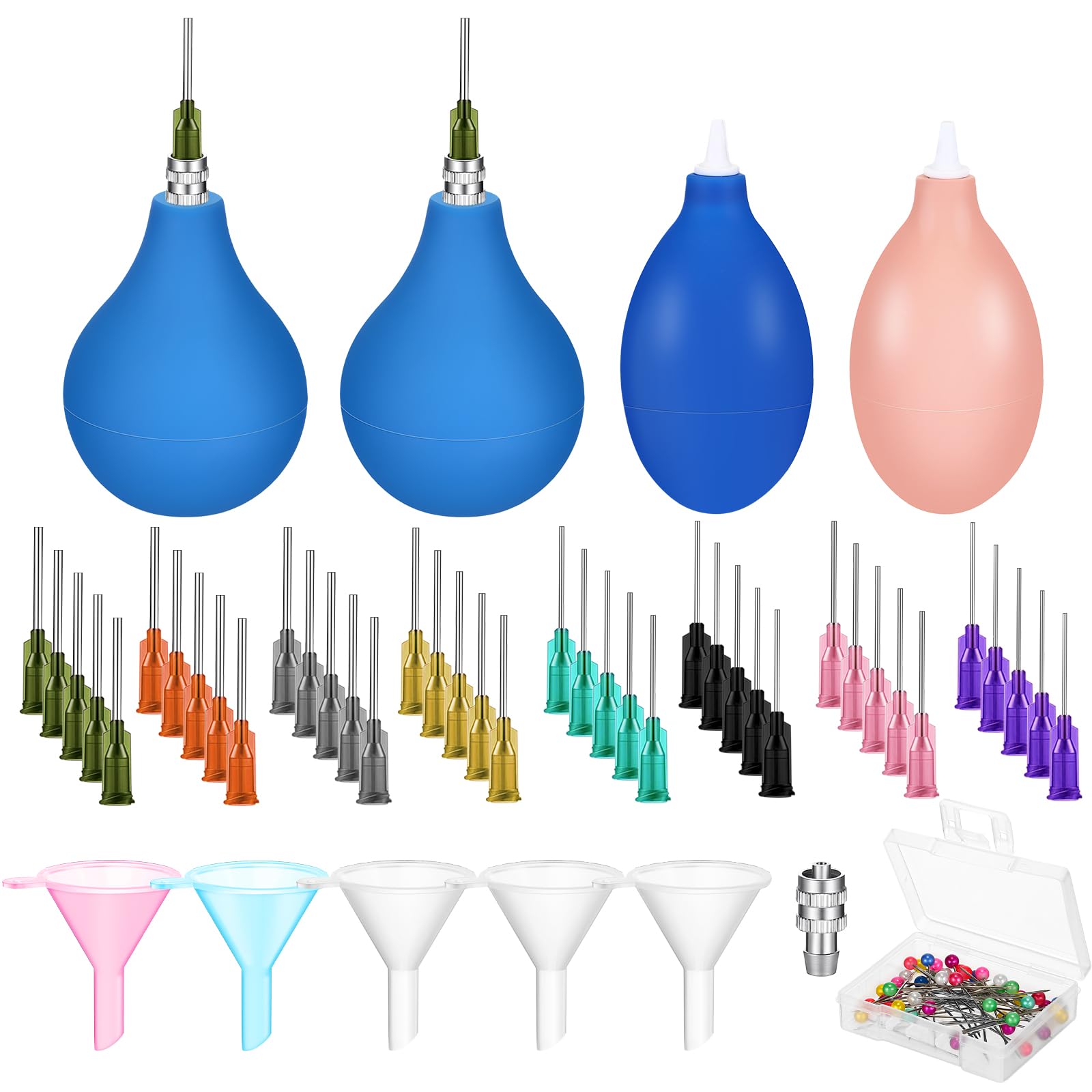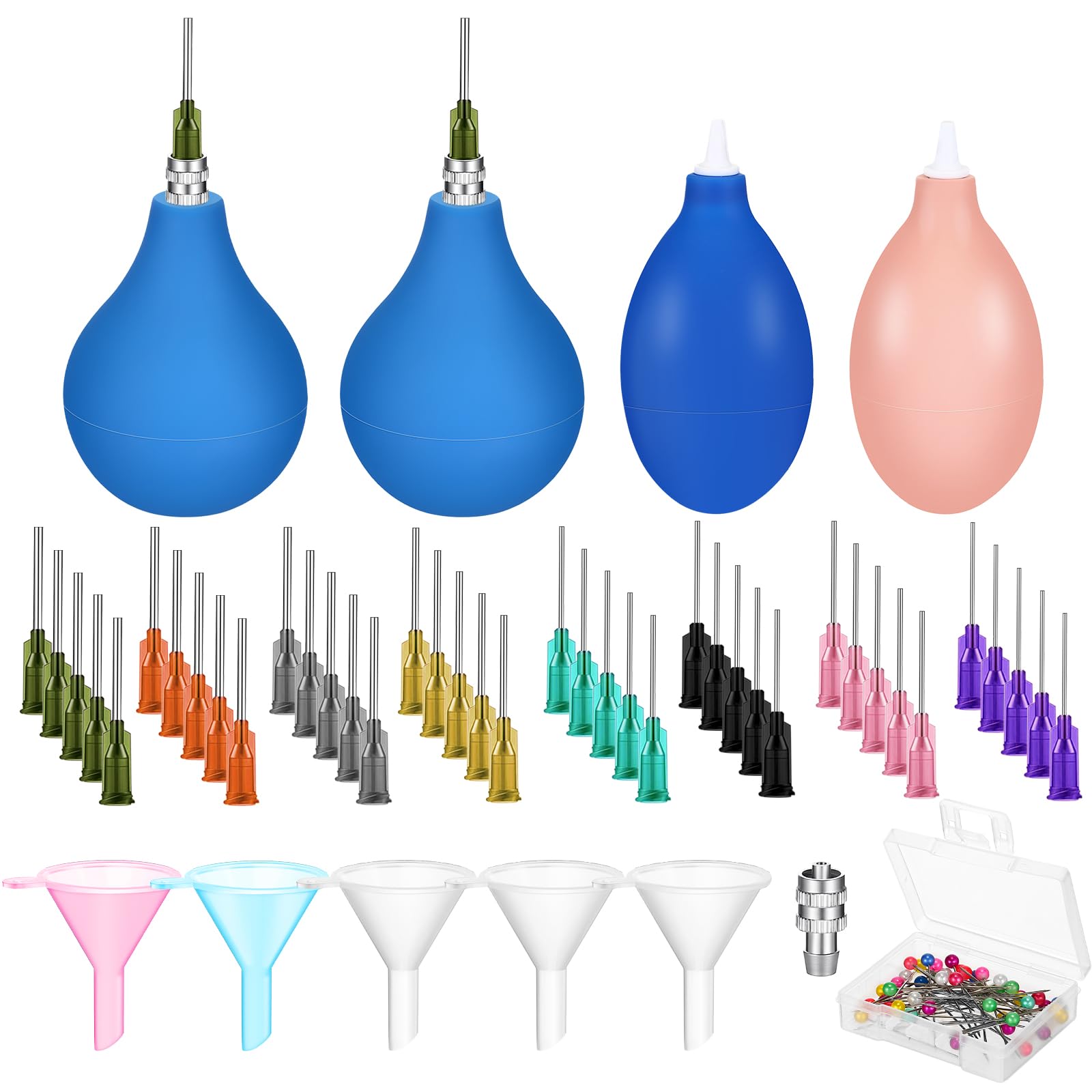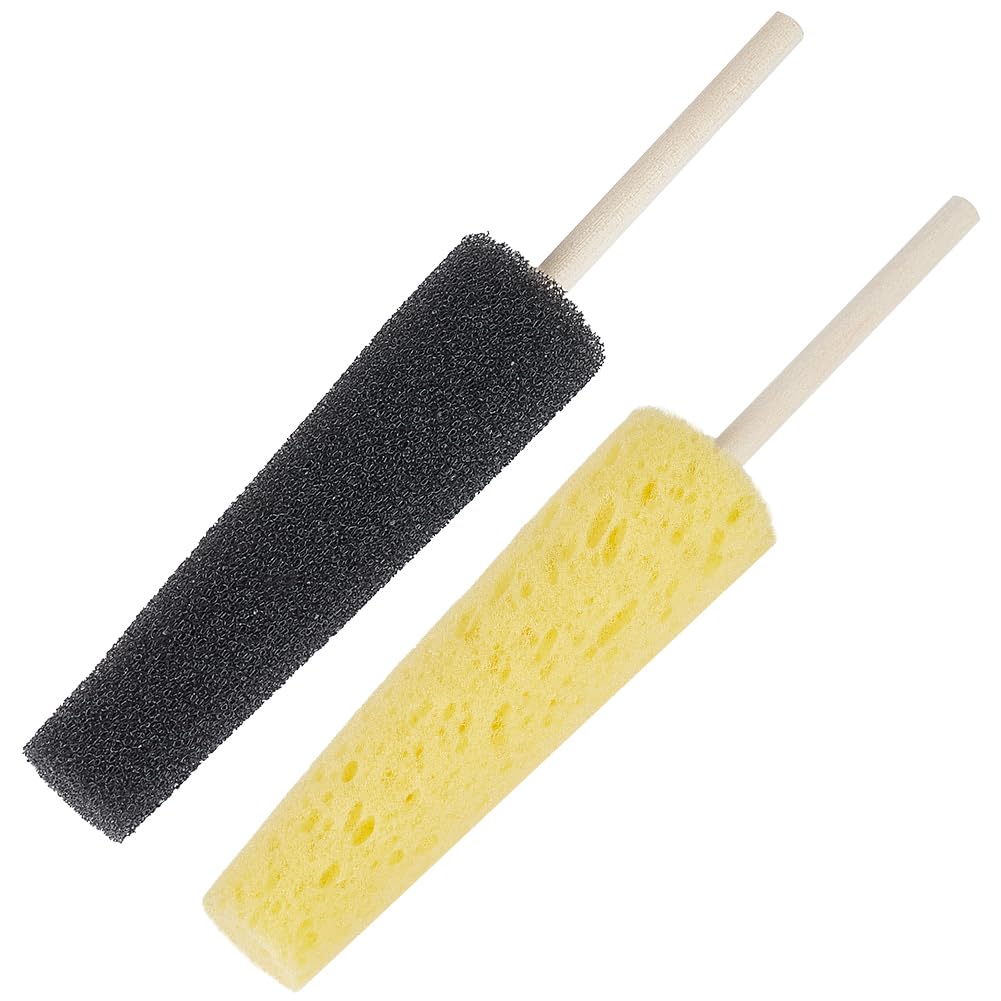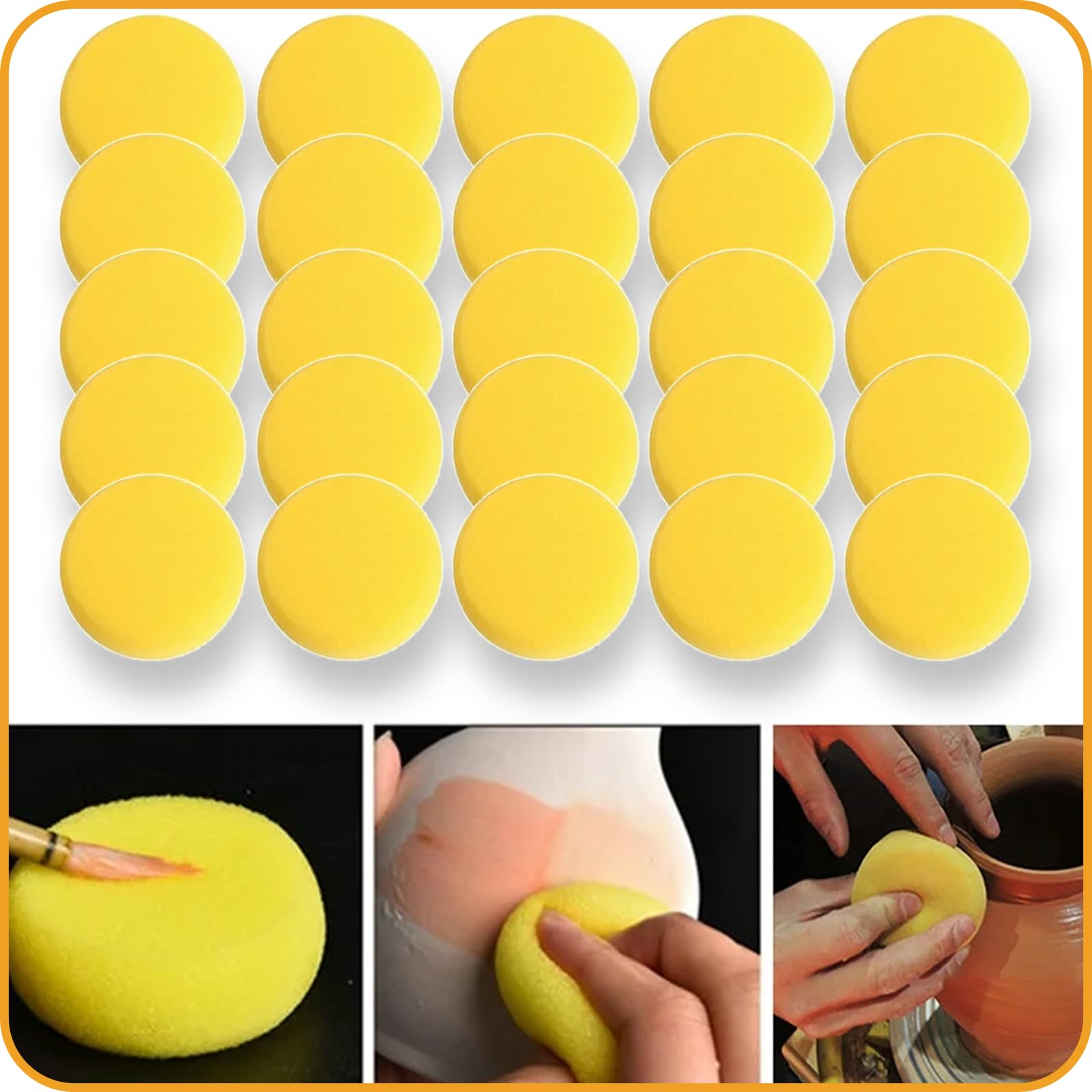In the world of pottery, a good sponge for glaze application is essential.
Pottery sponges play a pivotal role in ensuring an even and smooth coating of glaze on ceramic pieces.
The right sponge can significantly impact the finish of the glaze, contributing to the final appearance and quality of the pottery item.
Sponges are valued for their ability to apply glazes smoothly, erasing brush marks and allowing for precision in both detailing and large surface coverage.
When selecting a sponge for glaze application in pottery, several factors should be considered.
The material of the sponge is crucial, as it can affect absorbency and durability.
Natural sponges might offer better texture and absorption, whereas synthetic sponges can be more durable and easier to clean.
Size and shape are also important, impacting how easily you can reach intricate areas and cover large surfaces efficiently.
Non-toxic materials are preferable to ensure that no harmful substances affect the pottery during firing.
We explored numerous sponges to identify those that excel in glaze application, focusing on factors such as material, ease of use, and performance.
Best Sponges for Glaze Application
We’ve researched and compiled a selection of the best sponges for glaze application in pottery.
These choices have been recognized for their efficiency and ease of use, helping to ensure smooth and consistent results in your projects.
Dandat Pottery Tools Set
For anyone in need of a versatile tool for precise glaze application, this set offers a comprehensive solution that balances quality with affordability.
- Versatile set caters to various application needs
- Precise control for detailed work
- Easy to refill and clean
- Some needles are quite slender
- Bulbs may feel awkward for larger hands
- Slightly higher price point
The Dandat Pottery Tools Set features a practical collection of tools, perfect for glazing pottery with accuracy.
We immediately appreciated the assortment of glaze applicators and needles in this set, each tailored to different tasks.
Whether working with fine details or broader strokes, there’s a tip size suited for every need.
In our experience, the silicone applicators are particularly impressive.
They offer a comfortable grip and precise control, making them a joy to use during our pottery sessions.
Refilling these tools is simple, thanks to the included funnels, and the cleaning pins ensure longevity by keeping clogs at bay.
While the overall quality is notable, we did find the price a bit higher than similar products.
However, given its comprehensive nature and reliability, it justifies the investment.
Adjusting to the larger bulbs might take some practice, yet with time, they quickly become an essential part of our creative workflow.
BENECREAT Pottery Sponge Set
This product is an effective and versatile tool for pottery enthusiasts looking to enhance their glaze application process.
- Absorbs glaze efficiently
- Easy handling with a comfortable grip
- Comes in two distinct colors for convenience
- Uneven absorption between the sponges
- Limited to small-scale projects
- Durability may vary with frequent use
We found the BENECREAT Pottery Sponge Set to be an excellent addition to our pottery toolkit.
The dual-color feature helps us easily distinguish between the sponges, making it quicker to switch while working on various projects.
The sponge’s ability to absorb glaze efficiently ensures a smooth application, which is crucial for achieving that flawless finish on our pottery.
One of the standout features is the comfortable grip, allowing us to maintain precision without fatigue over longer sessions.
The sticks are long enough to reach deep into the pottery, ensuring we can smoothen interiors with ease.
This is particularly useful when working with larger pieces that require detailed attention.
Despite its benefits, the set has certain limitations.
We noticed that the absorption level of the yellow sponge was higher compared to the black one, which might require a bit of adjustment in use.
Also, while the set feels sturdy, we are unsure about its long-term durability with continuous use on large projects.
Overall, this set suits those looking for efficiency and ease in their pottery process.
AEROVA Telescoping Pottery Sponge
A practical option for potters who need a reliable tool for reaching into deep or narrow pottery pieces.
- Allows easy access to tall or narrow pottery.
- Lightweight and comfortable grip.
- Effortless to clean and maintain.
- Sponge isn’t fixed in place.
- Metal extensions can rust if submerged.
- Absorbency might not meet all expectations
The AEROVA Telescoping Pottery Sponge offers significant convenience by extending up to 27 inches.
This feature is particularly useful for those hard-to-reach areas inside tall pottery pieces, saving us much effort.
We appreciate its lightweight nature, which adds to the comfort of use, plus the non-slip grip ensures it stays in our hands during work.
Despite its merits, there are a few considerations.
The sponge isn’t fixed, which can be a matter of preference.
Some of us may find this slightly challenging depending on personal technique.
Also, it’s important to be mindful of the metal components since submerging them may cause rust.
While some find the sponge’s absorbency could be improved, our overall experience has been positive for typical pottery tasks.
We’ve found this tool to be a dependable choice for cleaning and shaping projects, especially when dealing with intricate pottery designs.
WAFJAMF Round Painting Sponges
These versatile sponges are an excellent choice for both beginners and seasoned artists looking to enhance their pottery with vibrant glazes.
- Excellent water absorption
- Easy to clean and reuse
- Compact and lightweight
- Initially appear small due to packaging
- May not suit all art styles
- Limited to smaller projects
We recently tried the WAFJAMF Round Painting Sponges, and they stood out due to their remarkable absorbency and ease of use.
The moment we soaked them in water, they expanded and became a handy tool for glaze application on pottery.
Their lightweight and compact design makes them easy to handle, especially during detailed work.
Despite their initial appearance, which might seem flat and unimpressive due to vacuum sealing, once opened, they transform into durable sponges that hold their shape well.
We’ve found them especially useful for both clay and ceramic projects, as they distribute glaze smoothly without leaving streaks.
While they may not fit every artistic technique or larger projects due to size constraints, they serve wonderfully for miniature crafts and classroom activities.
Their reusability and ease of cleanup are added bonuses, making them a cost-effective choice for regular pottery work.
Rokkuon Pottery and Painting Sponges
For those passionate about pottery and painting, Rokkuon sponges offer an excellent balance of functionality and durability.
- Made from high-quality polyurethane, these sponges are long-lasting and easy to clean.
- Versatile usage makes them great for pottery, painting, and various art forms.
- Superb water absorption ensures smooth and even glaze application.
- May require soaking upon arrival to regain proper shape.
- Not ideal for heavy-duty cleaning tasks.
- Limited effectiveness for large-scale pottery projects due to size.
These sponges immediately stand out for their soft texture and ability to hold water well.
This feature ensures that our glaze application on pottery is consistent and smooth.
The 3-inch size feels comfortable in our hands, making it easy to work even on intricate designs.
In terms of material, they are robust and seem designed to last.
Rather than wearing out quickly, they maintain their integrity even after multiple uses.
For those who often lend or misplace their sponges, having 25 pieces in one pack is quite the relief.
Though they’re not suited for large pottery pieces, their versatility covers various art needs, from face painting to fabric application.
The sponges meet our expectations in most creative endeavors, making them a reliable addition to any artist’s toolkit.
Buying Guide
When selecting the best sponges for glaze application in pottery, we should focus on a few key features.
Material
Natural sponges and synthetic options both have their pros and cons.
Natural sponges are softer and hold moisture well.
Synthetic sponges are more durable and often more affordable.
Choose based on personal preference and specific needs.
Size and Shape
Sponges come in various sizes and shapes.
Smaller sponges are ideal for detail work.
Larger sponges cover larger areas quickly.
It’s vital to pick the right size for the task at hand.
Absorbency
A sponge with high absorbency ensures even glaze distribution.
It allows us to maintain control over the application.
Test sponges for their ability to hold and release glaze smoothly.
Features to Consider
| Feature | Description |
|---|---|
| Texture | Smooth or textured surfaces affect finish outcomes. |
| Durability | Check that sponges hold up to repeated use. |
| Ease of Cleaning | Consider how simple it is to clean after use. |
Texture
The texture of a sponge can affect the final finish of the glaze.
Smooth sponges provide an even coat.
Textured sponges can add unique patterns and effects.
Durability
We should opt for sponges that withstand frequent use without degrading.
This is particularly important for those who work on multiple projects.
Frequently Asked Questions
In this section, we address some common concerns surrounding the use of sponges in glaze application.
We aim to share insights into selecting the right sponge, alternative tools, and effective techniques for both beginners and experienced potters.
What characteristics should I look for in a sponge for glazing pottery?
When selecting a sponge, look for ones that are soft yet durable.
They should absorb glaze well without dripping excessively.
A fine texture helps in achieving a smooth, even application on the pottery surface.
Natural sea sponges are often recommended for their absorbency and texture.
What are some alternative tools for glaze application on ceramics?
Besides sponges, brushes and spray guns are popular alternatives.
Each tool offers distinct advantages: brushes allow detailed application, while spray guns provide even coverage on larger surfaces.
Dipping tongs can also be used for submerging smaller pieces into glaze.
Each method has its own merits based on the desired finish.
Can you recommend any techniques for beginners applying glaze to pottery?
For beginners, start with small amounts of glaze on the sponge to prevent over-saturation.
Apply in thin, even layers, rotating the piece for consistent coverage.
Practice controlling the pressure and speed of application to manage the thickness of the glaze.
Observing others can also be helpful to learn different styles and techniques.
Where is the best place to purchase quality glazes for ceramics?
Quality glazes can be found in specialty ceramic supply stores, both physical and online.
Some well-known retailers include Dick Blick, Ceramic Supply, and Laguna Clay Company.
We suggest checking customer reviews and seeking advice from pottery communities to find reliable sources with a good selection of products.
How do you properly apply glaze to a clay pot with a sponge?
Begin by dampening the sponge to ensure even application.
Dip the sponge into the glaze and gently squeeze out excess.
Hold the pot securely and dab or wipe the glaze onto the surface, maintaining a consistent technique for even coverage.
Allow each layer to dry before adding subsequent layers for desired effects.
What are the differences between various pottery glazing techniques?
Pottery glazing techniques vary in their approach and results.
Dipping involves immersing pieces directly into glaze, creating uniform coverage.
Meanwhile, brushing allows for intricate patterns and texture.
Spraying offers a smooth, even coating over large areas.
These methods can be combined for unique finishes, depending on the potter’s style and preference.







